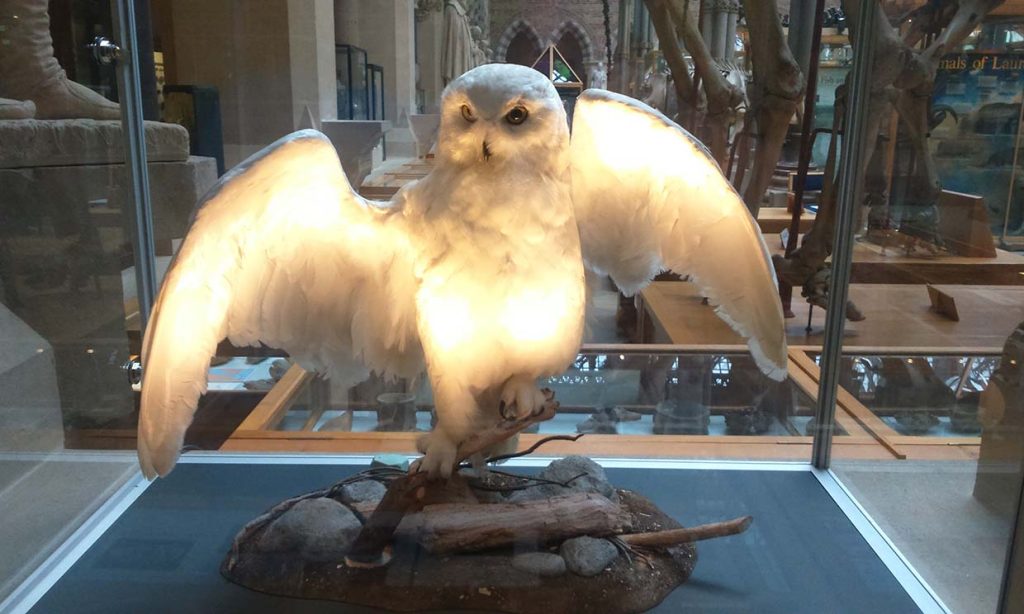My odyssey through the venerable corridors of Oxford University Museums was nothing short of a captivating sojourn. Join me in this immersive expedition, where I share insights into the services, merits, and subtleties of each museum, alongside practical information on locations, transportation, ticket pricing, and booking platforms.
My Chosen Masterpieces:
“The Rapture of Learning” – The Gutenberg Bible at The Ashmolean Museum
Location: Ashmolean Museum, Beaumont Street, Oxford, OX1 2PH, United Kingdom
Safeguarded within the hallowed halls of the Ashmolean Museum, the Gutenberg Bible stands as an illustrious testament to the evolution of human knowledge. This rare masterpiece, meticulously crafted by Johannes Gutenberg in the 15th century, serves as a herald of the printed word’s transformative journey through the annals of time. Its pages, adorned with intricate calligraphy, bear witness to the genesis of a revolutionary era in communication and education. The historical significance encapsulated within the fragile parchment of this venerable artifact renders it a captivating centerpiece of the museum’s unparalleled collection.
Standing in the presence of the Gutenberg Bible was an experience that transcended mere observation; it was a journey into the very essence of human intellectual evolution. The meticulous attention to detail in every handwritten letter, each stroke of the quill, spoke volumes about the dedication of Johannes Gutenberg to his craft. The realization of the pivotal role this Bible played in disseminating knowledge across generations left me in awe of the profound impact of the written word. The Ashmolean Museum’s commitment to preserving and showcasing such treasures ensures that each visitor is granted a rare opportunity for an enlightening encounter with the roots of human learning and communication.
“Whispers of Antiquity” – The Rosetta Stone at The Pitt Rivers Museum
Location: Pitt Rivers Museum, South Parks Road, Oxford, OX1 3PP, United Kingdom

Nestled within the curated confines of the Pitt Rivers Museum, the Rosetta Stone stands as a silent sentinel, a symbolic key that unlocks the whispers of antiquity. This renowned artifact, adorned with inscriptions in three scripts, holds the power to unravel the mysteries of ancient civilizations. Its historical significance is deeply rooted in its role as the linchpin for deciphering the enigmatic world of Egyptian hieroglyphs. The Rosetta Stone’s silent testimony echoes the intellectual prowess of humanity’s relentless pursuit of understanding its own past.
Confronting the Rosetta Stone was akin to stepping into the hallowed corridors of ancient wisdom, where visual symbols whispered tales of civilizations long gone. The Pitt Rivers Museum, with its commitment to anthropology and archaeology, provides an immersive journey through time. Each artifact, including the Rosetta Stone, becomes a gateway to understanding the complexities of human history. The museum’s dedication to presenting these relics in a context-rich environment elevates the experience, allowing visitors to appreciate the profound significance of each piece in the grand tapestry of human existence.
“Brushstrokes of Genius” – The Portrait of Shakespeare at The Ashmolean Museum
Location: Ashmolean Museum, Beaumont Street, Oxford, OX1 2PH, United Kingdom
The Ashmolean Museum stands as the proud custodian of a timeless masterpiece, the portrait of William Shakespeare. This exquisite painting serves as a visual homage to the literary genius, capturing the very essence of the man whose words shaped the English language. Believed to be the sole surviving portrait crafted during Shakespeare’s lifetime, this artwork beckons visitors to gaze into the penetrating eyes of the Bard and reflect on the enduring literary legacy he bequeathed to the world.
Standing in the presence of Shakespeare’s portrait was a surreal journey into the heart of literary history. The Ashmolean Museum’s commitment to curation goes beyond preservation; it is a deliberate act of storytelling. The portrait, skillfully displayed, becomes a living testament to the enduring influence of Shakespeare’s words. The immersive narrative created by the museum transcends time, enveloping visitors in the cultural richness of an era gone by. For literature enthusiasts, the Ashmolean Museum emerges not just as a repository of artifacts but as a living, breathing testament to the brilliance of human creativity. It is undeniably a must-visit, where the brushstrokes of genius come to life.
Top Recommendations:
“The Whirlwind of Time” – The Oxford Time Travel Exhibition at The Museum of the History of Science
Location: Museum of the History of Science, Broad Street, Oxford, OX1 3AZ, United Kingdom
Embark on a captivating journey through the corridors of time at The Museum of the History of Science, where the Oxford Time Travel Exhibition unfolds the rich tapestry of humanity’s ceaseless quest to measure and comprehend the elusive nature of time. From the ancient elegance of sundials to the cutting-edge precision of atomic clocks, this exhibition offers a mesmerizing exploration of the evolution of timekeeping technologies and the profound impact they have had on shaping our understanding of the world.
The Time Travel Exhibition stands as a testament to Oxford’s unwavering commitment to preserving and presenting the marvels of scientific history. Navigating through the exhibition feels like embarking on a whirlwind journey, where the interactive displays and meticulously preserved artifacts offer a multisensory and intellectually stimulating experience. The exhibition transcends the boundaries of age, making it equally engaging for curious minds of all generations. The Museum of the History of Science’s dedication to creating an immersive and educational space ensures that visitors leave not just informed but inspired by the intricacies of our perpetual dance with time.
“Wings of Wonder” – The Oxford Dodo at The Oxford University Museum of Natural History
Location: Oxford University Museum of Natural History, Parks Road, Oxford, OX1 3PW, United Kingdom
Take a profound step into the annals of natural history at The Oxford University Museum of Natural History, where the iconic Oxford Dodo commands attention. This singular specimen, a symbol of extinction, stands as a testament to the irrevocable consequences of human impact on the delicate balance of the natural world. The Oxford Dodo serves not only as a historical artifact but also as a poignant reminder of the fragility of biodiversity.

The presence of the Oxford Dodo is a somber reflection on the intricate interplay between humanity and the environment. The museum’s deliberate choice to showcase this emblematic creature is a testament to its commitment to environmental education and awareness. Standing before the Oxford Dodo, one cannot help but feel a deep sense of responsibility toward the preservation of our planet’s biodiversity. The museum’s thoughtful curation transforms this encounter into a thought-provoking journey, encouraging visitors to contemplate the far-reaching consequences of our actions on the delicate wings of Earth’s wonders.
“Harmony in Diversity” – The Musical Instruments Collection at The Bate Collection of Musical Instruments
Location: Bate Collection of Musical Instruments, St Aldate’s, Oxford, OX1 1DB, United Kingdom
Delve into the rich tapestry of musical evolution at The Bate Collection, where an expansive array of musical instruments unfurls a symphony of sonic expression. This collection, housed within the serene confines of the museum, transcends geographical and historical boundaries, weaving a harmonious narrative of cultural diversity through the universal language of music. From the timeless elegance of historic violins to the exotic allure of instruments sourced from diverse corners of the globe, The Bate Collection stands as a testament to the interconnectedness of humanity’s musical heritage.
The Bate Collection emerges as a harmonious celebration of the boundless creativity inherent in human expression. As an observer, the meticulous preservation of each instrument is a testament to the museum’s dedication to the art of music. Beyond a mere display, the collection becomes a melodic escape for enthusiasts and a poignant reminder of the role music plays in fostering cultural understanding. The Bate Collection’s commitment to music education further elevates the experience, inviting visitors to embark on a sensory journey through the diverse soundscape of our shared human history.
“Voices from the Shadows” – The Eastern Art Collection at The Ashmolean Museum
Location: Ashmolean Museum, Beaumont Street, Oxford, OX1 2PH, United Kingdom
Embark on a mesmerizing journey through the corridors of artistic expression with The Ashmolean Museum’s Eastern Art Collection. This curated assemblage unravels the intricate threads of Asia’s diverse cultural tapestry, featuring everything from the delicacy of Chinese porcelain to the vibrancy of Indian paintings. Each exhibit within this collection becomes a poignant voice, echoing the artistic traditions and cultural richness of the East.
The Eastern Art Collection at the Ashmolean Museum is more than a static display; it is a dynamic cultural odyssey. The meticulous curation of each exhibit and the deliberate effort to encompass diverse traditions create a captivating experience. Standing amidst these artful expressions feels like delving into the shadows of history, where each piece whispers tales of cultural nuances. The museum’s commitment to inclusivity is evident, fostering an environment that encourages exploration and understanding of the rich and varied artistry that the East has to offer.
Oxford University Museums stand as guardians of human creativity, knowledge, and exploration. Each museum, with its unique focus and offerings, contributes to the rich tapestry of Oxford’s cultural heritage. From the timeless elegance of the Ashmolean to the captivating narratives of the Pitt Rivers Museum, every institution beckons visitors on a journey through time and intellect.
Navigating these treasures requires a balance of curiosity and strategic planning. Whether you’re drawn to the brushstrokes of Shakespeare’s portrait or the whispers of ancient civilizations embodied in the Rosetta Stone, Oxford’s museums promise an intellectual adventure like no other.
In the realm of culture and history, Oxford’s treasures await your discovery. May this guide serve as a compass, guiding you through the intricacies of each museum and inspiring a profound appreciation for the boundless wonders they hold.